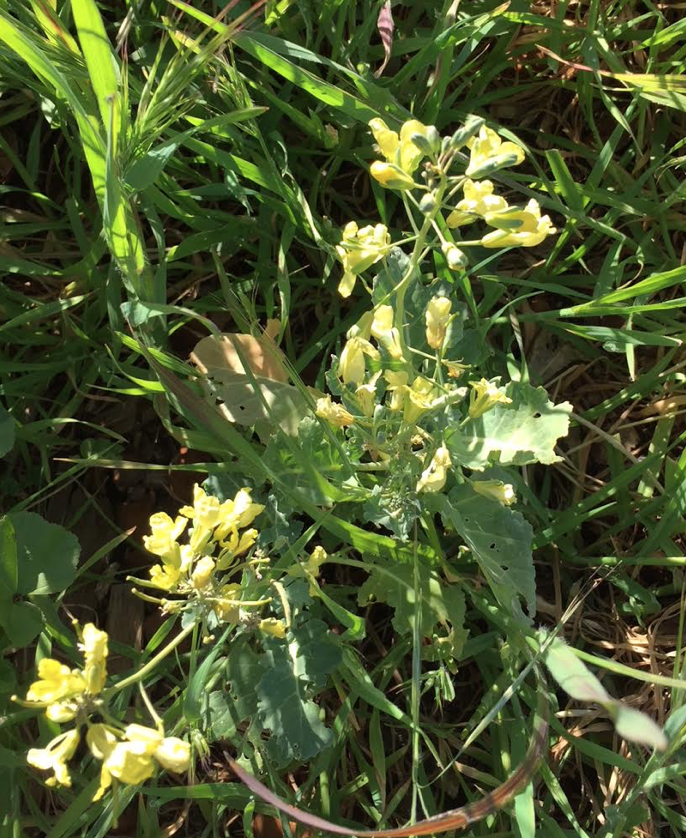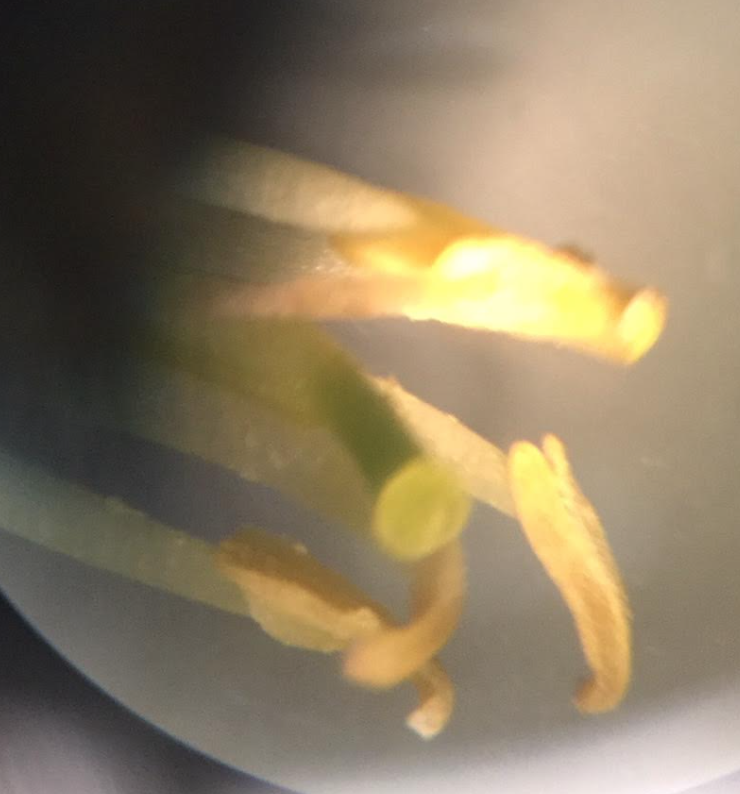In order for a plant to reproduce, it needs to go through fertilization. The main ingredient in fertilization is pollen, which is usually brought to flower either by the wind or from an insect such as a bee. The starting point for the pollen in fertilization is at the anther, the part of the plant that contains the pollen. The pollen is then transferred to the stigma, a part of the pistil which is the female parts of the flowers. Flowers such as the brassica oleracea, have both the male and female parts to reproduce. In the stigma, there is a tube that leads down to the ovary which in turn, has the ovules, the eggs. The pollen and an ovule must combine together to create seed. So in summary, pollen starts out at the top of the flower on the anthers. It transfers to the stigma and travels down the tube. When it reaches an ovule, it bursts and two male gametes are released. One gamete fuses with the egg and the other fuses with the polar nuclei, cells in the embryo sack of the plant.
 |
|
This is the flower that we used for our pictures. It would be the final product of multiple steps in the process of plant reproduction including pollination and fertilization. These plants would be attractive to bees that would lead pollen on the petals and anthers of plants. The anthers have all of the pollen that will be used to fertilization. Through fertilization, this plant would produce multiple seeds that could spread out over various areas and begin the whole process over again.
This is a close up picture to show multiple different parts of the flower. The main parts would be the petals, filament, anthers, style, the stigma, and a little part of the ovary. The main focus is to see the overall anatomy of the plant and see how the different parts in the different stages of fertilization all fit together. An important detail is to see how the anthers are close to the stigma so the stigma can take in pollen and produce more seeds.
 |
|
The focus of this picture is to show the relationship between the stigma and the anthers of the flower. The stigma is the yellowish-green stem in the middle with the yellow bulb that has pollen on it. The anthers would be the white-yellowish stems with what looks like yellow blades of grass on top. One of the first steps of fertilization is to transfer pollen from the anthers to the stigma. That's a reason why they are close to each other. So pollen can transfer much easier and faster. You can also see how there would a tube for the pollen to go down the stigma. This stem where the tube would be connects to the ovary.
 |
|
This picture is of the ovary and the ovules. It's hard to see, but it's the inside of the stigma. This would include the tube where pollen go down, the ovary that houses the ovules. Inside the stem, you can almost make out these gray little eggs, which would be the ovules. The ovules would mix with the pollen to create the seed that would eventually grow up to be bigger plants that are like the one in the first picture.
Comments
Post a Comment